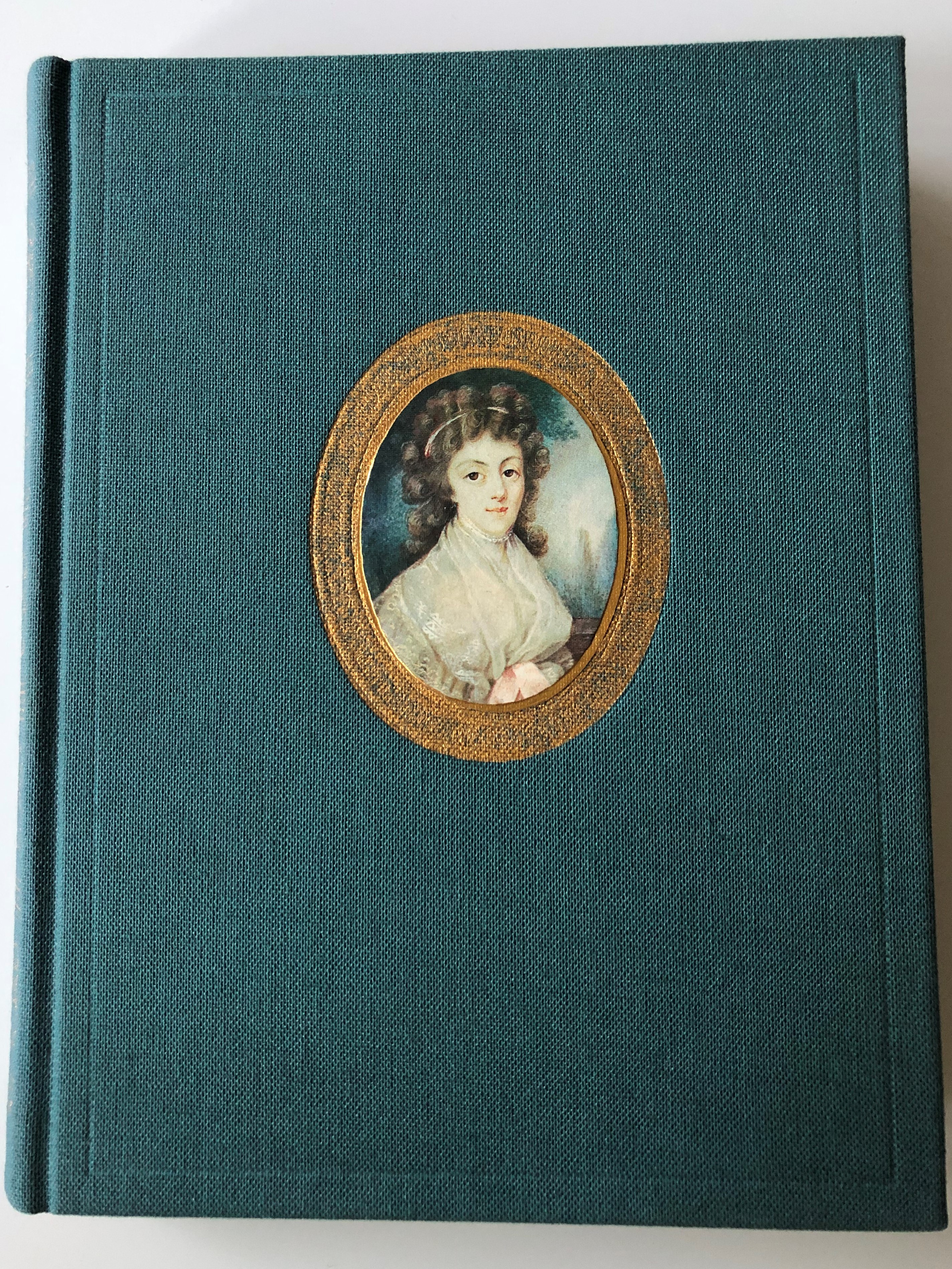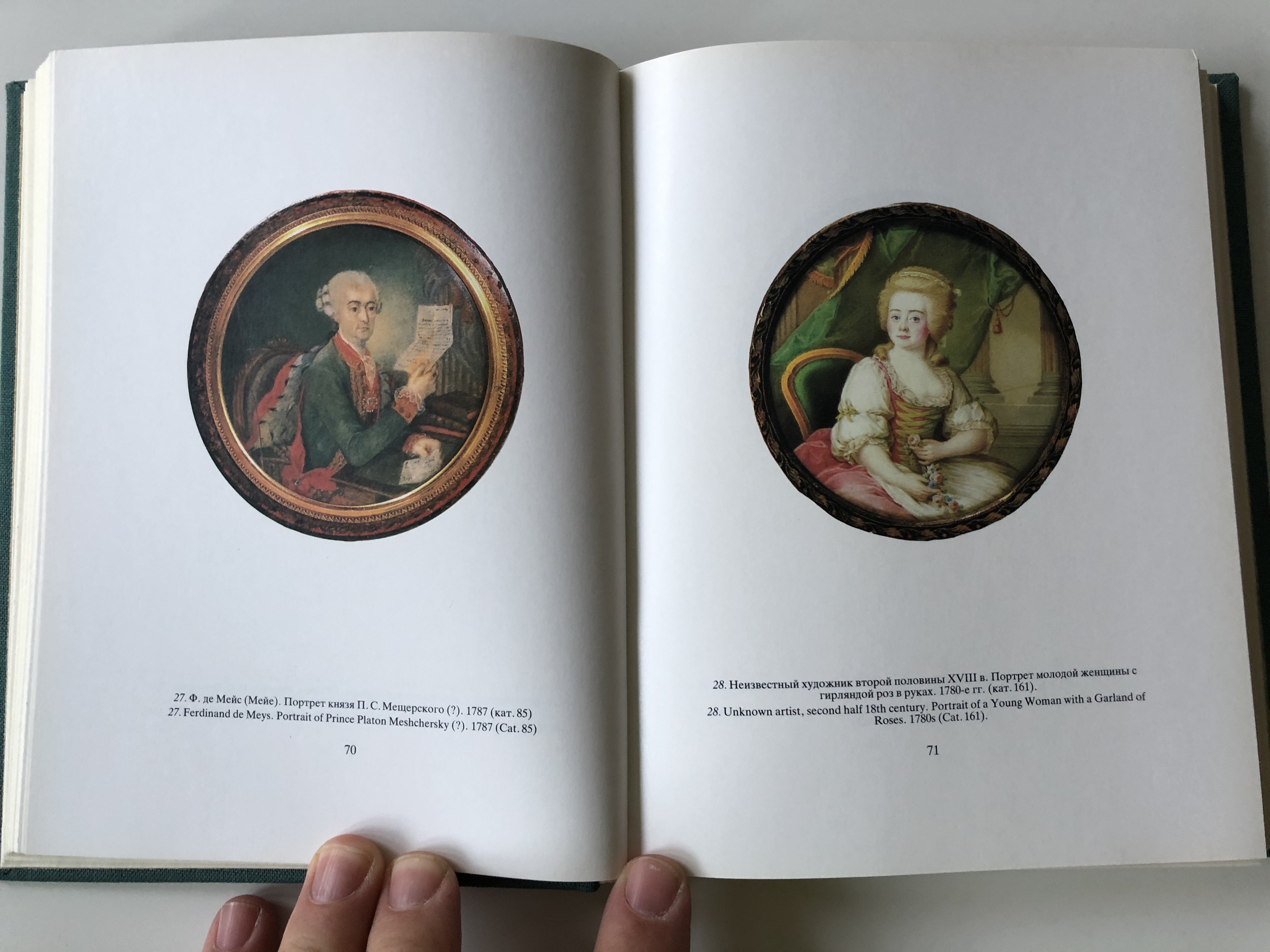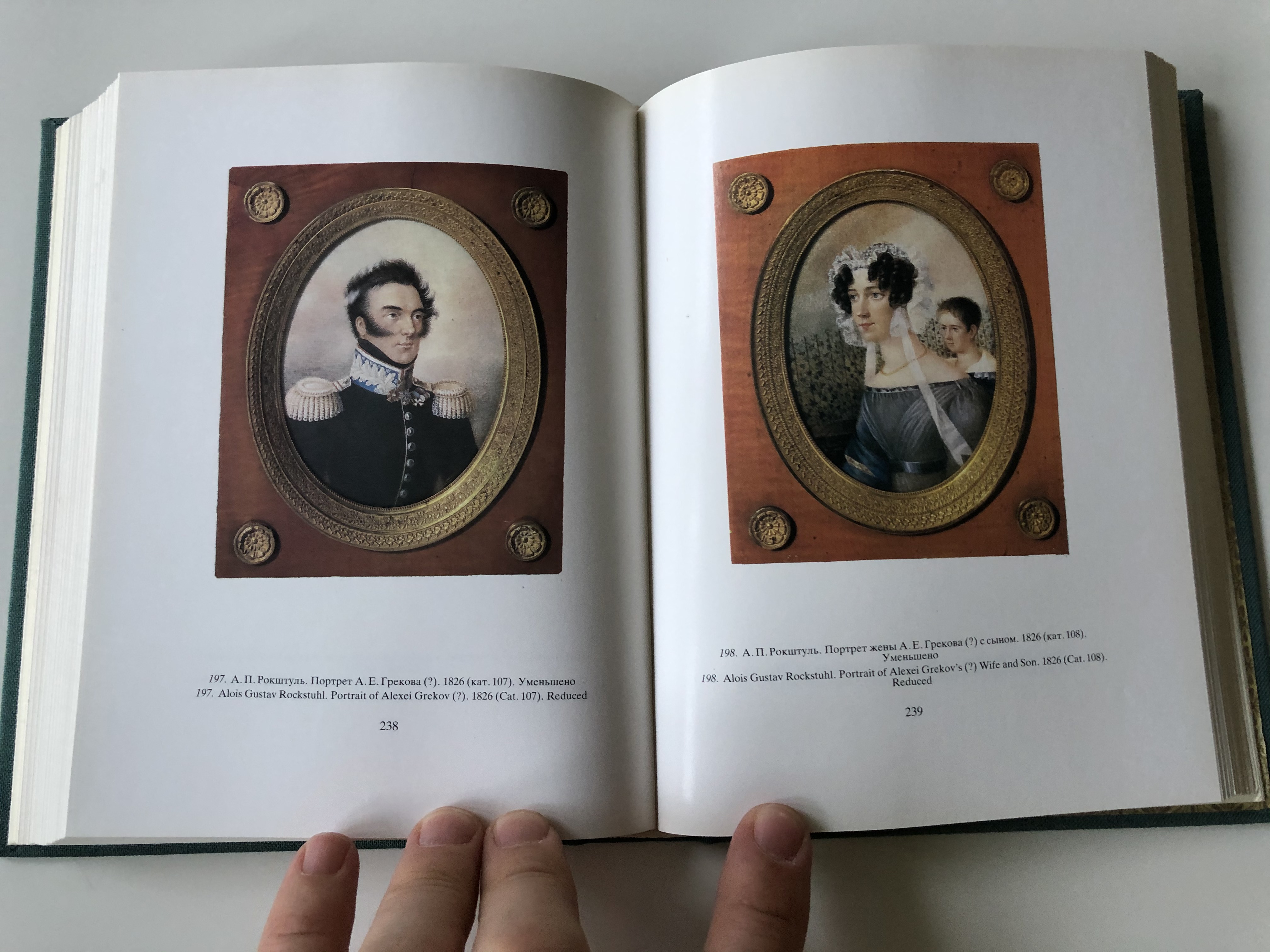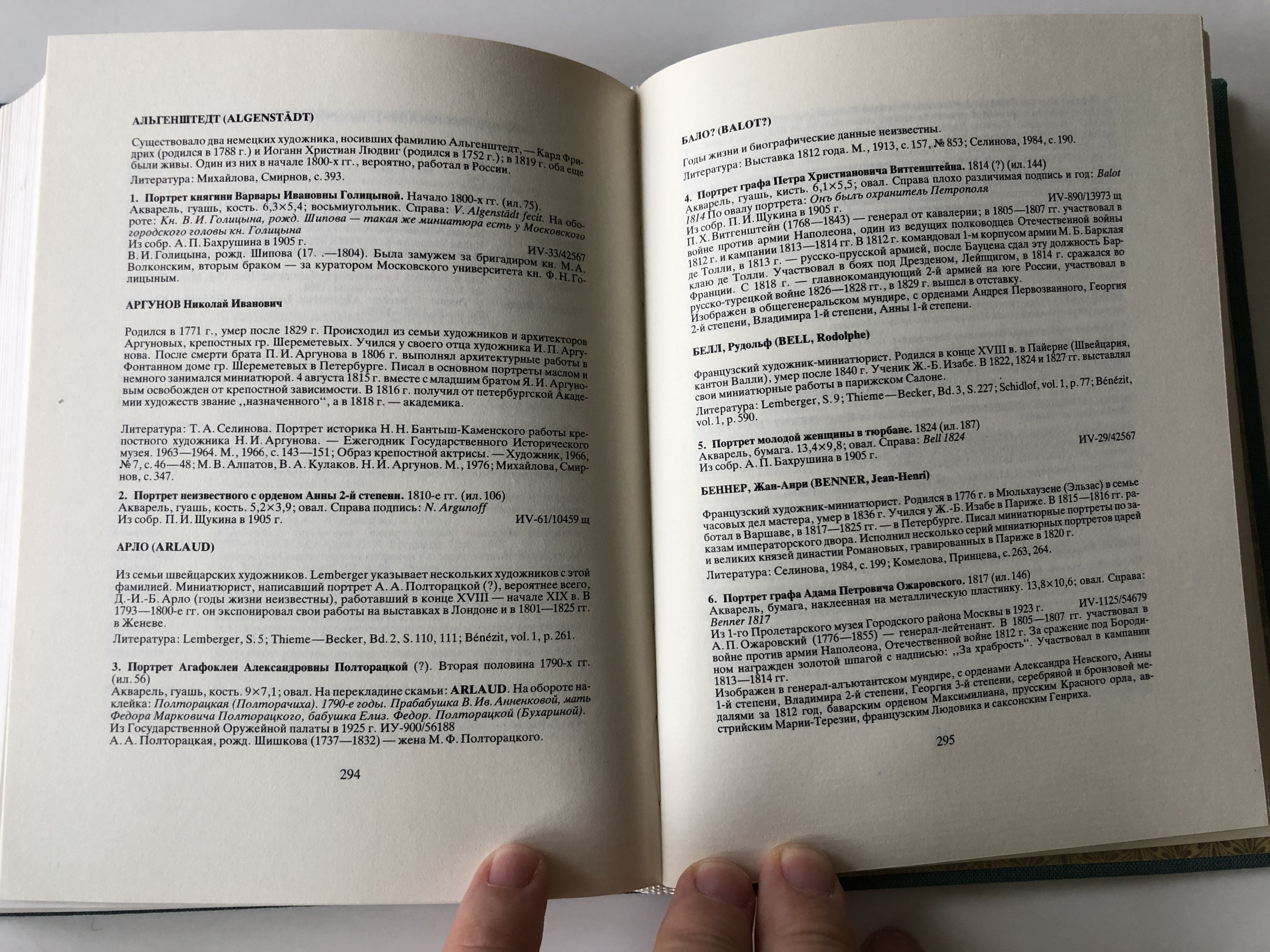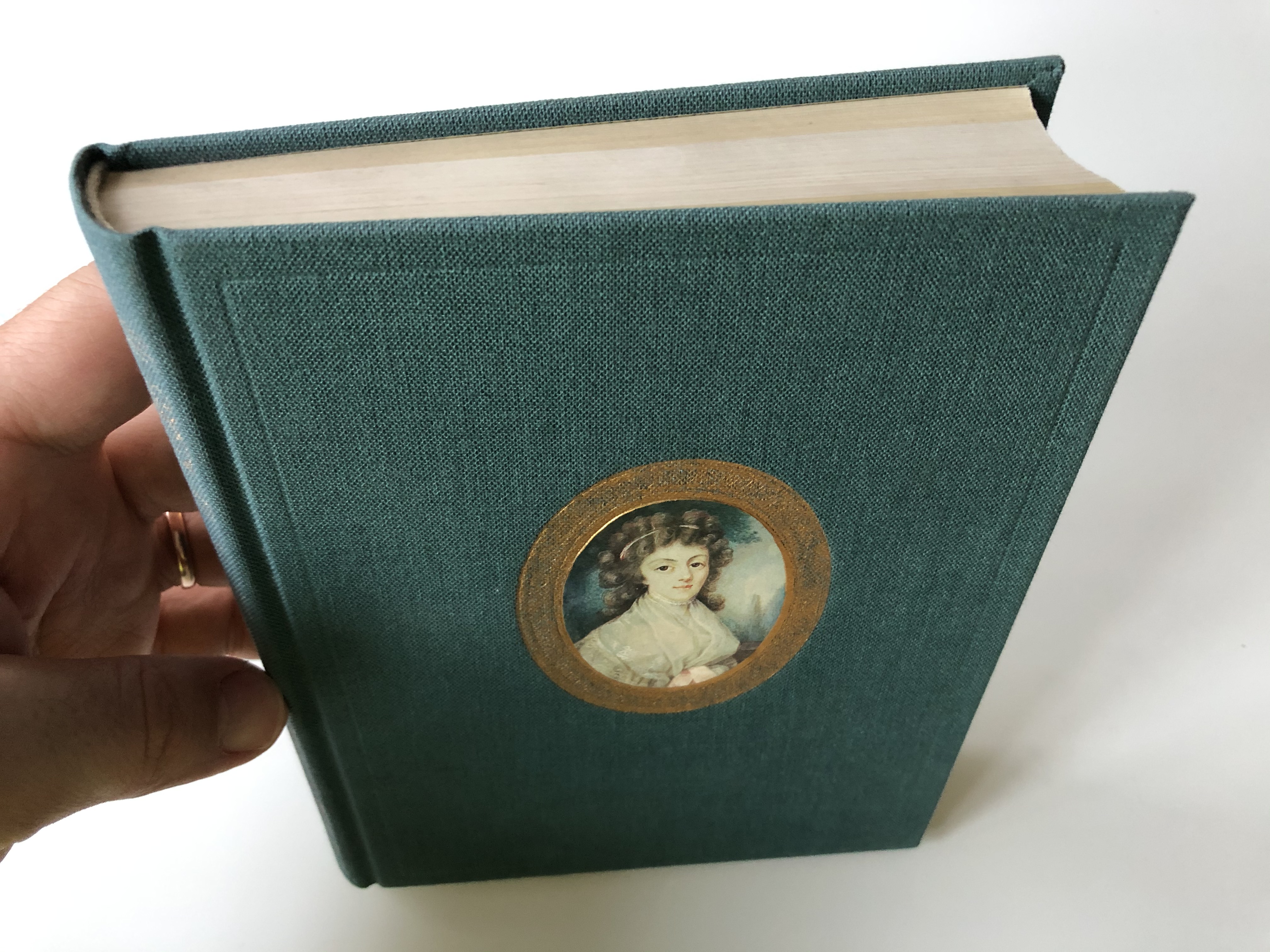Description
Portrait Miniature in Russia by T. A. Selinova / XVIII - XIX Centuries from the Collection of the Historical Museum, Moscow / Портретная миниатюра в России / Hardcover / Художник РСФСР 1988 / With english summary
Hardcover 1988
ISBN: 9785737000219 / 978-5737000219
ISBN-10: 5737000214
PAGES: 360
PUBLISHER: Художник РСФСР
LANGUAGE: Russian / English
Translated by I. S . Pamfilova
English Description:
This book highlights a fascinating and remarkable part of a Russian artistic heritage: eighteenth- and nineteenth-century in miniature portraits from the collection of the Historical Museum in Moscow, one of the largest collections of its kind in the Soviet Union. Presented here are 250 works by both Russian artists and foreign miniaturists who were active in Russia or painted portraits of Russian people abroad. Thanks to its great artistic and his
value, the collection presents much interest to specialists wide audience of art lovers alike.
Russian Summary:
Миниатюрная. живопись — особый вид изобразительного искусства, имеющий свои отличительные черты, свою специфику. Еще Михаил Агентов в 1765 году писал: ,Миниатюра в сравнении с живописью — субтильней и нежней““'.Тем не менее она развивалась в общем русле с другими видами изобразительного искусства, по тем же стилевым канонам и эстетическим нормам. Искусство миниатюрной живописи включает в себя разнообразные жанры: на миниатюрах можно встретить сельские и городские пейзажи, батальные сцены, но ведущая роль здесь принадлежит портрету. Сущест-
вует миниатюра станковая и миниатюра, имеющая прикладной характер, — ею украшались различные предметы.
A portrait miniature is a miniature portrait painting, usually executed in gouache, watercolor, or enamel. Portrait miniatures developed out of the techniques of the miniatures in illuminated manuscripts, and were popular among 16th-century elites, mainly in England and France, and spread across the rest of Europe from the middle of the 18th century, remaining highly popular until the development of daguerreotypes and photography in the mid-19th century. They were usually intimate gifts given within the family, or by hopeful males in courtship, but some rulers, such as James I of England, gave large numbers as diplomatic or political gifts. They were especially likely to be painted when a family member was going to be absent for significant periods, whether a husband or son going to war or emigrating, or a daughter getting married.
